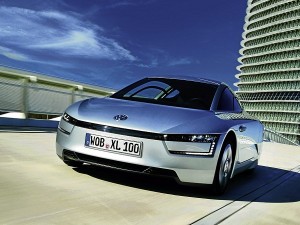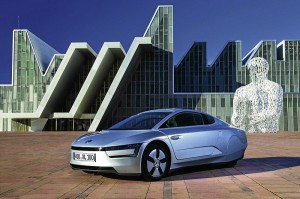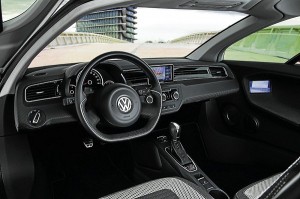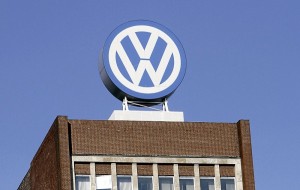
THE XL1 production car is a culmination of VW’s goal to produce a ‘one-liter car.’ Photo from the official website
You would probably be satisfied with your subcompact car’s mileage if it regularly returned 10 km/liter. If you are driving a hybrid, then mileage in the range of 25 km/liter would not be out of the ordinary. What if tomorrow, you could buy a car that gets 111 km/liter? Volkswagen is betting that some of us would be very excited by that prospect, as it is putting into production its XL1 ultra-high mileage car.
The XL1 production car is a culmination of VW’s goal to produce a “one-liter car”— standing not for one liter of engine displacement but for a consumption of one liter for 100 km of travel. To be precise, the XL1 consumes 0.9 liter per 100 km. When VW chairman Dr. Ferdinand Piech first put forward the idea of the one-liter car, the design was a very narrow vehicle, more like an enclosed motorcycle than a car, with the two passengers sitting in tandem. Now, with the third, production-ready, iteration, the car looks more like a regular car: from the world of “Back to the Future” or “Minority Report,” that is.

THE SHELL has been honed to reportedly be the most aerodynamic car ever. Photo from the official website
The futuristic design features a short, low design: at 3888 mm long, about the length of a Honda Jazz, and at a 1153-mm height, 120 mm lower than a Porsche Boxster. The shell has been honed to reportedly be the most aerodynamic car ever. That sleek body is made from carbon-fiber reinforced plastic for strength and light weight. The body weighs 230 kg, and the entire car 795 kg—25 percent lighter than a Jazz. The windows are polycarbonate, the windshield extrathin glass. Only 23 percent of the car is made from traditional steel and iron.
Powering the XL1 is a 0.8-liter, 2-cylinder turbodiesel engine, good for 48 HP. Think of it as one half of a 1.6-liter 4-cylinder, from which it was derived. The engine is paired with a 27-HP electric motor with lithium-ion batteries. Quoted performance is decent, at par with many subcompacts and even some 2.0-liter SUVs. With a 7-speed dual-clutch transmission, the car accelerates from 0-100 kph in 12.7 seconds, on to a 160-kph top speed. The VW is designated as a plug-in hybrid and is able to run in pure electric mode at up to 50 km. Range with the 10-liter fuel tank is projected to be more than 500 km.
Suspension components like the double-wishbone front and semitrailing link rear are made from aluminum to reduce weight. Carbon fiber is used for the antiroll bar, ceramics for the brake discs and magnesium for the wheels. Tires are extranarrow: 115/80 R 15s at the front and 145/55 R 16s at the rear; the Michelins are engineered for low rolling resistance.

THE INTERIOR features two seats, slightly offset but still the conventional side-by-side, rather than the original concept’s tandem. Photo from the official website
The interior features two seats, slightly offset but still the conventional side-by-side, rather than the original concept’s tandem arrangement. You can still take this car on a date, then. Butterfly-style doors theoretically make ingress and egress easier, not to mention adding a touch of exotic-car drama.
For comparison, the Toyota Prius quotes 40 km/liter in electric mode and 21 km/liter with use of the gasoline engine. The Chevrolet Volt gets 43 km/liter electric and 17 km/liter in hybrid mode. The electric cars Nissan Leaf and Tesla S get 55 km/liter and 38 km/liter equivalent mileage. Of course, all those cars can seat five passengers and pack substantially more cargo room, not to mention be as fast as a sports car, in the Tesla’s case. In other words, they’re more like cars that the average consumer will find useful. But the XL1 is not about fitting into the average garage; it’s a specialized vehicle that is about performance, and that performance is about achieving the most mileage on a single liter of fuel.
THE SLEEK body is made from carbon-fiber reinforced plastic for strength and light weight. Photo from the official website
“The XL1 is a very significant technology carrier for them (VW),” said Christoph Stuermer, an analyst at Frankfurt-based research firm IHS Automotive, in a Reuters story.
Brand development chief Ulrich Hackenberg also told reporters at VW’s factory in Osnabrueck, Germany, where the XL1 will be made, that the new model underscored the company’s growing push into plug-in hybrid technology.
Volkswagen did not give a price—analysts have pegged the XL1 at 30,000-50,000 euros ($40,000-$67,000)—nor how many it will make. VW has permission to produce up to 1,000 annually. With wire reports


